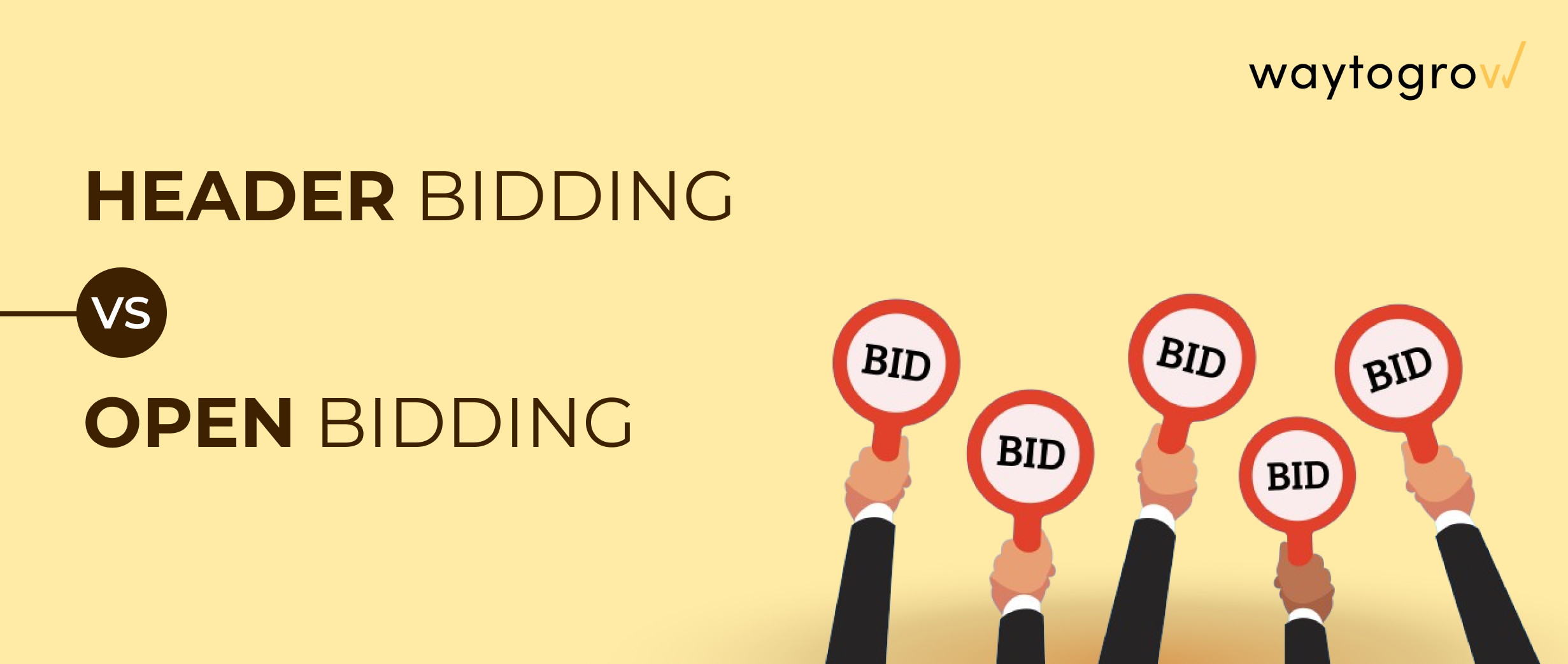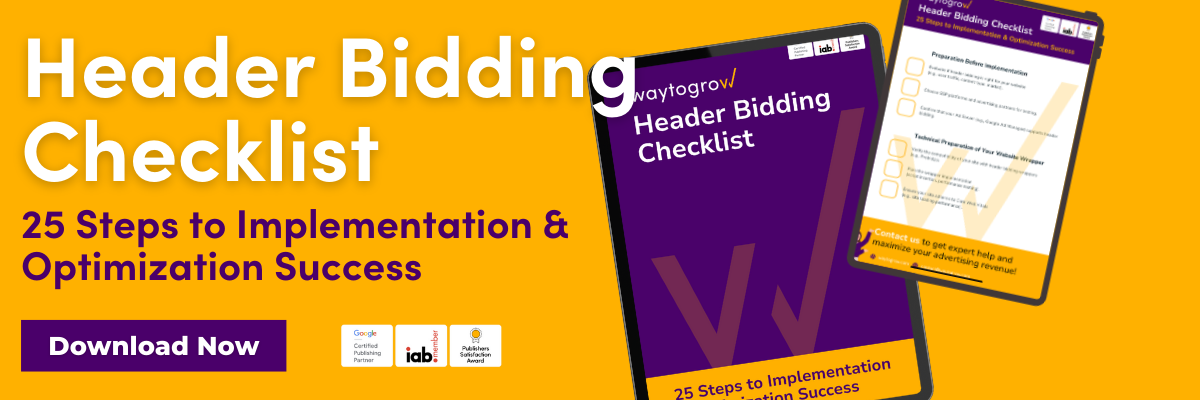- 1. The Basics: Understanding Header Bidding and Open Bidding
- 2. Advantages and Disadvantages of Header Bidding
- 3. Open Bidding: A Closer Look at its Features and Benefits
- 4. Header Bidding: Maximizing Revenue with Advanced Auction Techniques
- The Role of Technology: How Header Bidding and Open Bidding Work Behind the Scenes in Google Ad Manager
- Making an Informed Decision: Choosing Between Header Bidding and Open Bidding in Mobile App
Listen this post:
Welcome to our comprehensive guide on header bidding and open bidding, two revolutionary methods that have transformed the digital advertising landscape. In this article, we will delve into the header bidding fundamentals of these bidding strategies, explore their advantages and disadvantages, examine their features and benefits, uncover advanced auction techniques for maximizing revenue, demystify the technical aspects behind the scenes, and help publishers make informed decisions on which method is best suited for their needs.

1. The Basics: Understanding Header Bidding and Open Bidding
In the world of digital advertising, header bidding and open bidding are two popular methods used by publishers to maximize advertising revenue. Both methods involve auctioning advertising resources to multiple demand sources at the same time, but they differ in approach and functionality.
Header bidding is a technique that allows publishers to offer their advertising inventory to multiple demand partners before connecting to an ad server. It works by placing a small piece of JavaScript code in the header of a web page that triggers an auction among various sources of demand. Header Bidding allows publishers to receive offers from various advertisers in real time and choose the highest offer for each impression. By allowing multiple demand partners to compete simultaneously, header bidding increases competition and raises advertising prices, resulting in higher revenues for publishers.
Open bidding, on the other hand, is a newer approach that simplifies the process of programmatic buying and selling. Also known as unified auctions or exchange bidding, open bidding allows publishers to offer their inventory to multiple sources of demand through a single auction run by an ad exchange or supply-side platform (SSP). This process can be integrated with ad manager to optimize ad revenue and reduce latency. In this model, all demand partners submit their offers simultaneously, and the highest offer wins the impression. The tools available in the ad manager support this dynamic allocation, increasing the monetization of mobile applications. Open bidding eliminates the need for complex waterfall settings and reduces latency, making it a more effective and transparent method of selling advertising inventory. This is especially beneficial when using Google Ad Manager, which facilitates integration with external advertising exchanges.
2. Advantages and Disadvantages of Header Bidding

Header bidding has gained popularity among publishers due to its numerous advantages. Let’s explore some of the benefits of implementing header bidding:
- Increased Revenue: By allowing multiple demand partners to compete simultaneously, header bidding drives up ad prices and increases competition. This results in higher revenue for publishers as they can choose the highest bid for each impression.
- Access to Premium Demand: Header bidding opens up opportunities for publishers to access premium demand sources that may not be available through traditional waterfall setups. This means publishers can attract high-quality advertisers and secure better deals.
- Improved Fill Rates: With header bidding, publishers have a higher chance of filling their ad inventory as multiple demand partners are competing for impressions. This leads to improved fill rates and ensures that fewer ad slots go unsold.
However, it’s important to consider the potential drawbacks or challenges associated with header bidding:
- Increased Page Load Time: Implementing header bidding can result in increased page load time due to the additional JavaScript code and multiple ad calls. This can negatively impact user experience, especially on slower internet connections.
- Complex Implementation: Setting up header bidding requires technical expertise and integration with demand partners. Publishers need to ensure that their website is properly configured to handle the auction process and manage the different demand sources.
- Potential Latency Issues: In some cases, header bidding can introduce latency issues, causing delays in ad rendering and impacting website performance. Publishers need to carefully monitor and optimize their header bidding setup to minimize any negative effects on user experience.
Despite these challenges, header bidding has proven to be a valuable strategy for publishers looking to maximize their ad revenue and access premium demand sources. By carefully considering the advantages and potential drawbacks, publishers can make informed decisions about whether to implement header bidding in their advertising strategy.
3. Open Bidding: A Closer Look at its Features and Benefits

While header bidding has its advantages, open bidding offers a different approach to programmatic buying and selling that can further benefit publishers. Open bidding, also known as unified auctions or exchange bidding, simplifies the process by allowing publishers to offer their inventory to multiple demand sources through a single auction conducted by an ad exchange or supply-side platform (SSP). This is especially effective in mobile applications, where real-time bidding can significantly increase advertising revenues.
In open bidding, all demand partners submit their bids simultaneously, creating a highly competitive environment. This method is also applicable to mobile applications, where it can optimize the monetization of ad spaces. This increased competition among demand sources can lead to higher ad prices and increased revenue potential for publishers. The process occurs in real time, allowing for quick and competitive bidding. By eliminating the need for complex waterfall setups and reducing latency, open bidding provides a more efficient and transparent method of selling ad inventory. This efficiency is crucial for managing advertising inventory effectively.
One of the key advantages of open bidding is the potential for improved fill rates. With multiple demand sources competing for impressions in real-time, publishers have a higher chance of filling their ad inventory compared to traditional methods. This means fewer ad slots go unsold, resulting in higher overall revenue.
In addition to improved fill rates, open bidding also offers publishers access to a wider range of demand partners. By participating in a single auction, publishers can attract high-quality advertisers who may not be available through traditional waterfall setups. This opens up opportunities for better deals and partnerships with premium demand sources.
Overall, open bidding presents an efficient and transparent solution for publishers looking to maximize their ad revenue and increase competition among demand sources. By leveraging the benefits of open bidding, publishers can improve fill rates, access premium demand, and ultimately drive higher revenue.
4. Header Bidding: Maximizing Revenue with Advanced Auction Techniques

Now that we have a good understanding of the basics of header bidding and open bidding, let’s dive deeper into header bidding strategies to maximize revenue. One important aspect to consider is the type of auction used in header bidding, which can be either a first-price or second-price auction.
In a first-price auction, the highest bidder pays the exact amount they bid, while in a second-price auction, the highest bidder pays only slightly more than the second-highest bid. Each type of auction has its advantages and considerations. For example, a first-price auction can result in higher revenue per impression but may also lead to lower fill rates as advertisers may be more cautious with their bids. On the other hand, a second-price auction encourages advertisers to bid their true value for an impression, increasing competition and potentially improving fill rates.
To optimize their header bidding setup for maximum revenue, publishers should consider implementing techniques such as dynamic floor pricing and bid shading. Dynamic floor pricing allows publishers to set minimum prices for their ad inventory based on factors like user demographics or ad placement. By adjusting floor prices in real-time, publishers can ensure they are maximizing revenue without sacrificing fill rates.
Bid shading is another advanced technique that helps publishers strike a balance between winning high bids and avoiding overpaying for impressions. With bid shading, publishers use algorithms to adjust their bid price based on historical data and predicted win rates. This allows them to win impressions at a fair price while still maximizing revenue.
Implementing header bidding effectively requires careful planning and execution. Publishers should consider factors such as ad server integration, demand partner selection, and latency optimization. It’s important to work closely with technology partners who specialize in header bidding to ensure a smooth implementation process.
By following best practices and leveraging advanced auction techniques, publishers can unlock the full potential of header bidding and maximize their ad revenue. Header bidding provides an opportunity to increase competition among demand sources, access premium demand, and ultimately drive higher revenue for publishers.
The Role of Technology: How Header Bidding and Open Bidding Work Behind the Scenes in Google Ad Manager

Now that we understand the basics of header bidding and open bidding, let’s take a closer look at the technical aspects that make these auction-based models possible. Both header bidding and open bidding rely on various technology components to facilitate the auction process and ensure seamless ad selection.
In header bidding, publishers integrate a small piece of JavaScript code into the header of their web pages. This code triggers an auction among different demand partners, including ad exchanges, supply-side platforms (SSPs), and demand-side platforms (DSPs). When a user visits a webpage, the code sends bid requests to multiple demand partners simultaneously. These demand partners then respond with their bids in real time, providing information about the price they are willing to pay for each impression. The publisher’s ad server collects these bid responses and selects the highest bid to serve the ad to the user.
Similarly, in open bidding, publishers offer their inventory to multiple demand sources through a single auction conducted by an ad exchange or SSP. These auctions are carried out according to specific guidelines to ensure transparency and fairness. Ad exchanges act as intermediaries between publishers and advertisers, facilitating the buying and selling of ad inventory. The prices obtained through these auctions reflect the market value, ensuring competitive and fair transactions. SSPs play a crucial role in open bidding by aggregating demand from various sources and conducting the auction on behalf of publishers. This method, known as open bidding, allows for dynamic and competitive bidding. DSPs represent advertisers and submit their bids to the SSP during the auction process. The process of open bidding ensures that the highest bid wins, optimizing revenue for publishers.
Both header bidding and open bidding operate in real-time, allowing for quick decision-making and efficient ad selection. These auction-based models have revolutionized digital advertising by increasing competition among demand sources and enabling publishers to maximize their revenue potential.
Making an Informed Decision: Choosing Between Header Bidding and Open Bidding in Mobile App

Now that we have explored the differences between header bidding and open bidding, it’s time to make an informed decision about which method is best suited for your needs as a publisher. To start, create a new profit group, which will help you evaluate the potential revenue from each method. Both header bidding and open bidding have their advantages and considerations, so it’s important to compare them side by side and consider various factors before making a decision. Publishers using Ad Exchange must accept specific conditions to benefit from open bidding.
Header Bidding
- Increased Revenue Potential: Header bidding allows publishers to maximize ad revenue by enabling multiple demand partners to compete simultaneously in a unified auction.
- Access to Premium Demand: Header bidding offers access to high-value demand sources that may not be available through traditional waterfall setups.
- Improved Fill Rates: Header bidding increases the likelihood of selling ad impressions as multiple demand partners bid in real time.
- Transparency in Bidding: Header bidding provides publishers with insights into the value of their inventory and the bids from various demand sources.
- Enhanced Control: Header bidding enables publishers to set specific rules and prioritize demand partners, tailoring the auction to their needs.
- Flexibility in Implementation: Header bidding supports both client-side and server-side setups, offering options to optimize performance based on the publisher’s infrastructure.
- Reduced Reliance on Waterfall: Header bidding eliminates inefficiencies of the traditional waterfall model, ensuring fair competition among demand partners.
Open Bidding
- Simplified Programmatic Process: Streamlines programmatic ad buying by conducting a single, unified auction managed by an ad exchange or SSP.
- Global Demand Access: Provides publishers with access to a broader range of demand sources, including exclusive deals through SSPs.
- Increased Competition: Encourages competitive bidding among demand partners, driving up ad prices and publisher revenue.
- Ease of Integration: Offers a relatively straightforward setup compared to more complex header bidding frameworks.
- Managed by SSP or Exchange: Reduces the publisher’s technical burden, as the auction process is managed externally.
- Real-Time Auctions: Facilitates dynamic pricing and real-time optimization of inventory allocation.
Challenges (Both Header Bidding and Open Bidding)
- Increased Page Load Time: Both models can introduce latency, impacting user experience if not optimized correctly.
- Complex Implementation: Header bidding requires advanced technical capabilities, such as integrating JavaScript code and managing multiple demand partners.
- Dependency on Technology Partners: Open bidding relies heavily on ad exchanges or SSPs for managing the auction and ensuring transparency.
- Latency Issues: Unoptimized setups can result in slower page loads and decreased user satisfaction.
- Transparency Concerns: Publishers may lack visibility into auction mechanics in open bidding environments, leading to potential trust issues.
- Continuous Maintenance: Both approaches require ongoing monitoring and optimization to ensure performance and mitigate technical issues.
When choosing between header bidding and open bidding, consider factors such as your publisher size, inventory type, and technical capabilities. If you are a smaller publisher with limited technical resources, open bidding may be a more suitable option as it simplifies the process and reduces the need for complex implementation. On the other hand, if you have a larger inventory and want to access premium demand sources, header bidding can provide the necessary flexibility and control.
Ultimately, the decision between header bidding and open bidding depends on your specific goals and requirements as a publisher. It’s important to evaluate the pros and cons of each method and consider how they align with your revenue objectives and technical capabilities. By carefully weighing these factors, you can make an informed decision that maximizes your ad revenue potential.
Share on:











